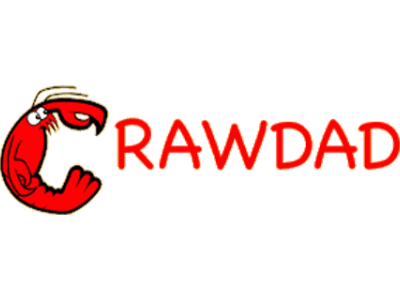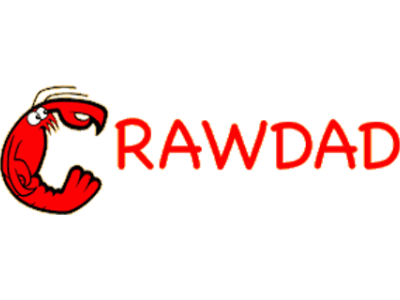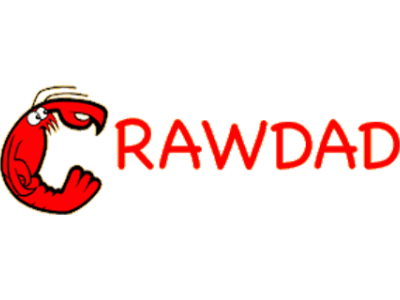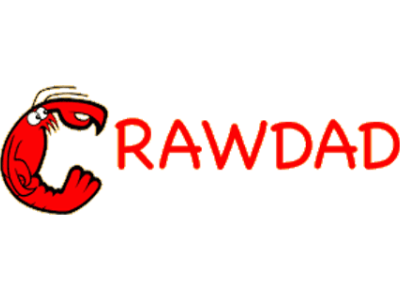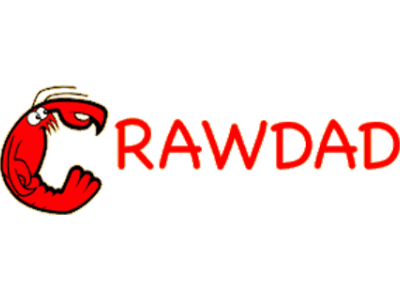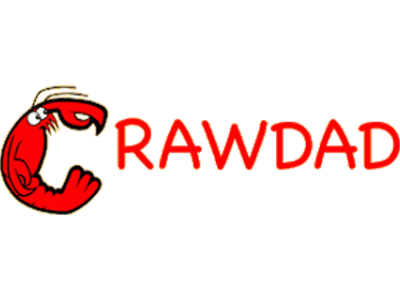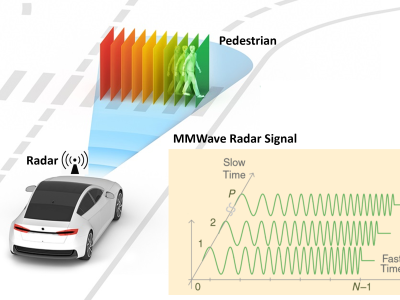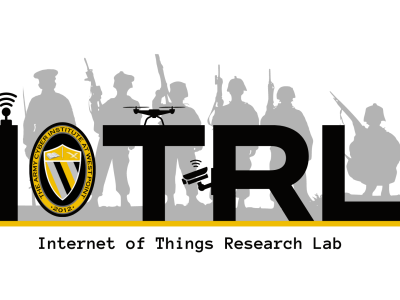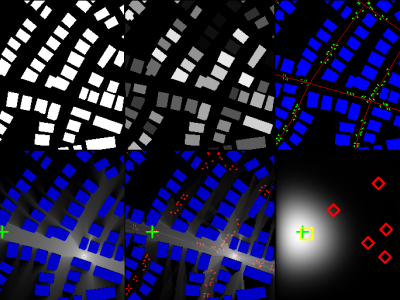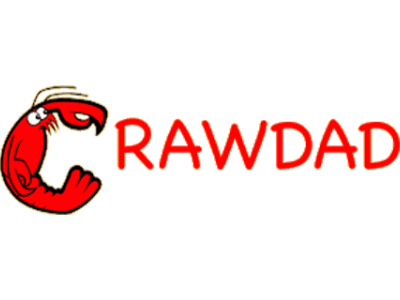CRAWDAD st_andrews/locshare
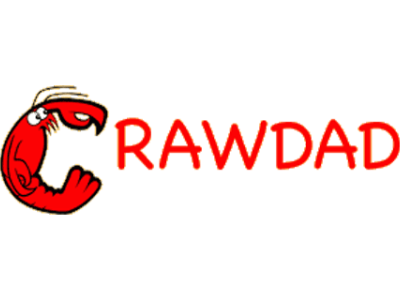
- Citation Author(s):
-
Iain Parris (University of St Andrews)Tristan HendersonFehmi Ben Abdesslem (University of Cambridge)
- Submitted by:
- CRAWDAD Team
- Last updated:
- DOI:
- 10.15783/C7WW2F
 436 views
436 views
- Categories:
- Keywords:
Abstract
last modified :
2011-10-12
release date :
2011-10-12
date/time of measurement start :
2010-04-22
date/time of measurement end :
2010-11-20
collection environment :
We recruited students to participate in an experiment and asked them to carry a
mobile phone that automatically collects their locations and uploads these to a
server. Participants could choose the information to be disclosed on Facebook,
and to whom it could be disclosed. Participants also received ESM questions on
the mobile phone (concerning activity, sharing choices, and privacy concerns),
which were also answered through the same device.
We deployed 20 smartphone devices per run, and we performed four runs of the
experiment. Two runs were performed at the University of St Andrews, another
two runs were performed at University College London.
network configuration :
We chose to use the Nokia N95 8GB, a smartphone featuring GPS, Wi-Fi, 3G
cellular network, a camera, and an accelerometer. This phone runs the Symbian
operating system, for which we developed a location-sharing application in
Python, LocShare. This was installed on the phones prior to distribution to
participants and designed to automatically run on startup and then remain
running in the background.
data collection methodology :
Where available, GPS was used to determine a participant's location every 10
seconds. When GPS was not available (e.g., when a device is indoors), a scan
for Wi-Fi access points was performed every minute.
ESM Questions were sent to the phone using the Short Messaging Service (SMS)
and displayed and answered using the phone.
Every 5 minutes, all collected data, such as locations and ESM answers, were
uploaded to a server using the 3G network.
sanitization :
No record was made of mappings between device IDs and participants. Locations
are reduced to categories. Facebook List ID's names are removed.
limitation :
To extend battery life and allow a longer use of the mobile phone, the location
was only retrieved (using GPS or WiFi) when the phone's accelerometer indicated
that the device was in motion.
Traceset
st_andrews/locshare/2010
Traceset of a privacy study, including encounters, sharing preferences, and accelerometer readings, conducted at University of St Andrews.
files: locshare-StA1.tar.gz, locshare-StA2.tar.gz, locshare-UCL1.tar.gz, locshare-UCL2.tar.gz
description: This is the traceset of a privacy study, including encounters, sharing preferences, and accelerometer readings. The study was conducted in St Andrews and London.
measurement purpose: Location-aware Computing, Social Network Analysis, Human Behavior Modeling, Localization
methodology: We recruited students to participate in an experiment and asked them to carry a mobile phone that automatically collects their locations and uploads these to a server. Participants could choose the information to be disclosed on Facebook, and to whom it could be disclosed. Participants also received ESM questions on the mobile phone (concerning activity, sharing choices, and privacy concerns) which were also answered through the same device. We deployed 20 smartphone devices per run, and we performed four runs of the experiment. Two runs were performed at the University of St Andrews, another two runs were performed at University College London. We chose to use the Nokia N95 8GB, a smartphone featuring GPS, Wi-Fi, 3G cellular network, a camera, and an accelerometer. This phone runs the Symbian operating system, for which we developed a location-sharing application in Python, LocShare. This was installed on the phones prior to distribution to participants, and designed to automatically run on startup and then remain running in the background. Where available, GPS was used to determine a participant's location every 10 seconds. When GPS was not available (e.g., when a device is indoors), a scan for Wi-Fi access points was performed every minute. ESM Questions were sent to the phone using the Short Messaging Service (SMS) and displayed and answered using the phone. Every 5 minutes, all collected data, such as locations and ESM answers, were uploaded to a server using the 3G network.
sanitization: No record was made of mappings between device IDs and participants. Locations are reduced to categories. Facebook List ID's names are removed.
last modified: 2011-10-12
dataname: st_andrews/locshare/2010
version: 20111012
change: the initial version.
release date: 2011-10-12
date/time of measurement start: 2010-04-22
date/time of measurement end: 2010-11-18
limitation: The location was only retrieved (using GPS or WiFi) when the phone's accelerometer indicated that the device was in motion.
error: Data provided by ESM are still self-reported, and a user can lie or ignore questions.
st_andrews/locshare/2010 Traces
StA1: Trace files from the first run of a privacy study, including encounters, sharing preferences, and accelerometer readings.
configuration: We recruited students to participate in an experiment and asked them to carry a mobile phone that automatically collects their locations and uploads these to a server. Participants could choose the information to be disclosed on Facebook, and to whom it could be disclosed. Participants also received ESM questions on the mobile phone (concerning activity, sharing choices, and privacy concerns) which were also answered through the same device. We deployed 20 smartphone devices per run. This is data from the first out of two runs performed at University of St Andrews. We chose to use the Nokia N95 8GB, a smartphone featuring GPS, Wi-Fi, 3G cellular network, a camera, and an accelerometer. This phone runs the Symbian operating system, for which we developed a location-sharing application in Python, LocShare. This was installed on the phones prior to distribution to participants, and designed to automatically run on startup and then remain running in the background.
format:
The data from each run of the experiment are contained in five csv files, each marked with the prefix StA1:
* users: the users participating in the experiment;
* acc: the accelerometer data;
* events: the events that took place involving the user, and responses to
questions regarding those events;
* encounters: the encounters between users;
* friendslists: details regarding each participant’s friendlists.
StA1-users.csv
This file contains the information about the users. The six columns contain information regarding the user id and the results of the pre-briefing questionnaire:
59,1,1,1,0,1
60,0,1,1,1,2
61,1,1,1,1,2
In order, these columns show:
1. User ID
2. Whether the sharing onto Facebook of the user informatio was simulated. If the user sharing was simulated, we did not share information on Facebook. We did not share what we asked them whether we could share. See Facebook or fakebook for description of the sharing policies.
3. Has the user ever used their phone to share their location on an online social network?
0=no 1=yes
4. Has the user ever disclosed their location or activity as their Facebook status in the past?
0=no 1=yes
5. Has the user ever changed their Facebook settings to limit some of their friends from accessing their data?
0=no 1=yes
6. How often does the user claim to use Facebook on their phone?
0=never 1=sometimes 2=everyday This information was gathered in the pre-briefing interview and not gathered during the course of the experiment.
StA1-acc.csv
This file contains the accelerometer readings. There are five columns:
79,"2010-11-16 20:20:14",15,-10,-340
79,"2010-11-16 20:20:26",15,-10,-340
79,"2010-11-16 20:20:37",15,-10,-340
79,"2010-11-16 20:20:48",15,-5,-335
These columns show:
1. User ID
2. Time of reading
3. X-axis reading
4. Y-axis reading
5. Z-axis reading
StA1-events.csv
This file contains the events readings collected during the experiment. There are eight different columns:
77,"5",NULL,"2010-11-16 15:58:29",NULL,614,0,NULL
77,"5",NULL,"2010-11-16 15:58:29",NULL,617,1,NULL
77,"5",NULL,"2010-11-16 15:58:29",NULL,619,0,NULL
77,"5",NULL,"2010-11-16 15:58:29",NULL,616,0,NULL
1. User ID
2. Type of event, we asked one of the following questions:
0: "Would you disclose your current location to: friend_list?" (yes/no per friend_list)
1: "Are you around location?" If not, ask "Where are you?". Then ask "Would you disclose this to: friend_list?" (yes/no per friend_list)
2: "You are around location. Would you disclose this to: friend_list?" (yes/no per friend_list)
3: "Take a picture of your current location or activity!". Then ask "Would you disclose this to: friend_list?" (yes/no per friend_list)
4: Unprompted photos.
5: Unprompted texts.
6: "We might publish your current location to Facebook just now. How do you feel about this?" (Likert scale, 1=Happy, 3=Indifferent, 5=Unhappy)
7: "You are around [location]. We might publish this to Facebook just now. How do you feel about this?" (Likert scale, 1=Happy, 3=Indifferent, 5=Unhappy)
3. Time question was asked. If it is not asked but answered, this means that the user volunteered the information of their own volition.
4. Time the question was answered
5. The place category. Not all locations were categorised. There are several different categories: * 'Leisure' * 'Retail' * 'Food and Drink' * 'Residential' * 'Academic' * 'Library' * NULL - we did not try to categorise the location
6. The List ID we are asking the user if they want to share with
7. Response the user gave for this specific list ID 8. Co-presence with 0=none, 1=friends, 2=strangers during the event, NULL=question not asked.
StA1-encounters.csv This file contains the details of the encounters between individuals. Co-location was inferred if the GPS indicated participants were within 10m of one another. "2010-11-18 16:29:27","2010-11-18 16:29:37",78,59 "2010-11-18 16:31:02","2010-11-18 16:31:12",79,59 "2010-11-18 16:31:02","2010-11-18 16:31:12",79,78 "2010-11-18 16:37:24","2010-11-18 16:37:34",78,79 1. encounter start time 2. encounter end time 3. user 1 4. user 2 StA1-friendslists.csv The friendslists of the users. 78,621,"all friends",251 78,622,NULL,26 78,623,NULL,2 78,624,NULL,22 1. User ID 2. List ID lists the friends. 3. Name of the friendslist. Indicates the name of the list if it existed in Facebook. We only have values for all friends or everyone to protect privacy of participants. 4. The number of people in the list on Facebook. This is NULL when list consists of everyone.
description: Trace files from the first run of a privacy study, including encounters, sharing preferences, and accelerometer readings, conducted at University of St Andrews. This is the first of the two runs conducted at University of St Andrews.
last modified: 2011-10-12
dataname: st_andrews/locshare/2010/StA1
version: 20111012
change: the initial version
release date: 2011-10-12
date/time of measurement start: 2010-04-22
date/time of measurement end: 2010-05-03
url: /download/st_andrews/locshare/locshare-StA1.tar.gz
limitation: The location was only retrieved (using GPS or WiFi) when the phone's accelerometer indicated that the device was in motion.
sanitization: No record was made of mappings between device IDs and participants. Locations are reduced to categories. Facebook List ID’s names are removed.
error: Data provided by ESM are still self-reported, and a user can lie or ignore questions.
StA2: Trace files from the second run of a privacy study, including encounters, sharing preferences, and accelerometer readings.
configuration: We recruited students to participate in an experiment and asked them to carry a mobile phone that automatically collects their locations and uploads these to a server. Participants could choose the information to be disclosed on Facebook, and to whom it could be disclosed. Participants also received ESM questions on the mobile phone (concerning activity, sharing choices, and privacy concerns) which were also answered through the same device. We deployed 20 smartphone devices per run. This is data from the second out of two runs performed at University of St Andrews. We chose to use the Nokia N95 8GB, a smartphone featuring GPS, Wi-Fi, 3G cellular network, a camera, and an accelerometer. This phone runs the Symbian operating system, for which we developed a location-sharing application in Python, LocShare. This was installed on the phones prior to distribution to participants, and designed to automatically run on startup and then remain running in the background.
format: The data from each run of the experiment are contained in five csv files, each marked with the prefix StA2: * users: the users participating in the experiment; * acc: the accelerometer data; * events: the events that took place involving the user, and responses to questions regarding those events; * encounters: the encounters between users; * friendslists: details regarding each participant’s friendlists. StA2-users.csv This file contains the information about the users. The six columns contain information regarding the user id and the results of the pre-briefing questionnaire: 59,1,1,1,0,1 60,0,1,1,1,2 61,1,1,1,1,2 In order, these columns show: 1. User ID 2. Whether the sharing onto Facebook of the user informatio was simulated. If the user sharing was simulated, we did not share information on Facebook. We did not share what we asked them whether we could share. See Facebook or fakebook for description of the sharing policies. 3. Has the user ever used their phone to share their location on an online social network? 0=no 1=yes 4. Has the user ever disclosed their location or activity as their Facebook status in the past? 0=no 1=yes 5. Has the user ever changed their Facebook settings to limit some of their friends from accessing their data? 0=no 1=yes 6. How often does the user claim to use Facebook on their phone? 0=never 1=sometimes 2=everyday This information was gathered in the pre-briefing interview and not gathered during the course of the experiment. StA2-acc.csv This file contains the accelerometer readings. There are five columns: 79,"2010-11-16 20:20:14",15,-10,-340 79,"2010-11-16 20:20:26",15,-10,-340 79,"2010-11-16 20:20:37",15,-10,-340 79,"2010-11-16 20:20:48",15,-5,-335 These columns show: 1. User ID 2. Time of reading 3. X-axis reading 4. Y-axis reading 5. Z-axis reading StA2-events.csv This file contains the events readings collected during the experiment. There are eight different columns: 77,"5",NULL,"2010-11-16 15:58:29",NULL,614,0,NULL 77,"5",NULL,"2010-11-16 15:58:29",NULL,617,1,NULL 77,"5",NULL,"2010-11-16 15:58:29",NULL,619,0,NULL 77,"5",NULL,"2010-11-16 15:58:29",NULL,616,0,NULL 1. User ID 2. Type of event, we asked one of the following questions: 0: "Would you disclose your current location to: friend_list?" (yes/no per friend_list) 1: "Are you around location?" If not, ask "Where are you?". Then ask "Would you disclose this to: friend_list?" (yes/no per friend_list) 2: "You are around location. Would you disclose this to: friend_list?" (yes/no per friend_list) 3: "Take a picture of your current location or activity!". Then ask "Would you disclose this to: friend_list?" (yes/no per friend_list) 4: Unprompted photos. 5: Unprompted texts. 6: "We might publish your current location to Facebook just now. How do you feel about this?" (Likert scale, 1=Happy, 3=Indifferent, 5=Unhappy) 7: "You are around [location]. We might publish this to Facebook just now. How do you feel about this?" (Likert scale, 1=Happy, 3=Indifferent, 5=Unhappy) 3. Time question was asked. If it is not asked but answered, this means that the user volunteered the information of their own volition. 4. Time the question was answered 5. The place category. Not all locations were categorised. There are several different categories: * 'Leisure' * 'Retail' * 'Food and Drink' * 'Residential' * 'Academic' * 'Library' * NULL - we did not try to categorise the location 6. The List ID we are asking the user if they want to share with 7. Response the user gave for this specific list ID 8. Co-presence with 0=none, 1=friends, 2=strangers during the event, NULL=question not asked. StA2-encounters.csv This file contains the details of the encounters between individuals. Co-location was inferred if the GPS indicated participants were within 10m of one another. "2010-11-18 16:29:27","2010-11-18 16:29:37",78,59 "2010-11-18 16:31:02","2010-11-18 16:31:12",79,59 "2010-11-18 16:31:02","2010-11-18 16:31:12",79,78 "2010-11-18 16:37:24","2010-11-18 16:37:34",78,79 1. encounter start time 2. encounter end time 3. user 1 4. user 2 StA2-friendslists.csv The friendslists of the users. 78,621,"all friends",251 78,622,NULL,26 78,623,NULL,2 78,624,NULL,22 1. User ID 2. List ID lists the friends. 3. Name of the friendslist. Indicates the name of the list if it existed in Facebook. We only have values for all friends or everyone to protect privacy of participants. 4. The number of people in the list on Facebook. This is NULL when list consists of everyone.
description: Trace files from the second run of a privacy study, including encounters, sharing preferences, and accelerometer readings, conducted at University of St Andrews. This is the second of the two runs conducted at University of St Andrews.
last modified: 2011-10-12
dataname: st_andrews/locshare/2010/StA2
version: 20111012
change: the initial version
release date: 2011-10-12
date/time of measurement start: 2010-05-06
date/time of measurement end: 2010-05-14
url: /download/st_andrews/locshare/locshare-StA2.tar.gz
limitation: The location was only retrieved (using GPS or WiFi) when the phone's accelerometer indicated that the device was in motion.
sanitization: No record was made of mappings between device IDs and participants. Locations are reduced to categories. Facebook List ID’s names are removed.
error: Data provided by ESM are still self-reported, and a user can lie or ignore questions.
UCL1: Trace files from the third run of a privacy study, including encounters, sharing preferences, and accelerometer readings.
configuration: We recruited students to participate in an experiment and asked them to carry a mobile phone that automatically collects their locations and uploads these to a server. Participants could choose the information to be disclosed on Facebook, and to whom it could be disclosed. Participants also received ESM questions on the mobile phone (concerning activity, sharing choices, and privacy concerns) which were also answered through the same device. We deployed 20 smartphone devices per run. This is data from the first out of two runs performed at University College London. We chose to use the Nokia N95 8GB, a smartphone featuring GPS, Wi-Fi, 3G cellular network, a camera, and an accelerometer. This phone runs the Symbian operating system, for which we developed a location-sharing application in Python, LocShare. This was installed on the phones prior to distribution to participants, and designed to automatically run on startup and then remain running in the background.
format: The data from each run of the experiment are contained in five csv files, each marked with the prefix UCL1: * users: the users participating in the experiment; * acc: the accelerometer data; * events: the events that took place involving the user, and responses to questions regarding those events; * encounters: the encounters between users; * friendslists: details regarding each participant’s friendlists. UCL1-users.csv This file contains the information about the users. The six columns contain information regarding the user id and the results of the pre-briefing questionnaire: 59,1,1,1,0,1 60,0,1,1,1,2 61,1,1,1,1,2 In order, these columns show: 1. User ID 2. Whether the sharing onto Facebook of the user informatio was simulated. If the user sharing was simulated, we did not share information on Facebook. We did not share what we asked them whether we could share. See Facebook or fakebook for description of the sharing policies. 3. Has the user ever used their phone to share their location on an online social network? 0=no 1=yes 4. Has the user ever disclosed their location or activity as their Facebook status in the past? 0=no 1=yes 5. Has the user ever changed their Facebook settings to limit some of their friends from accessing their data? 0=no 1=yes 6. How often does the user claim to use Facebook on their phone? 0=never 1=sometimes 2=everyday This information was gathered in the pre-briefing interview and not gathered during the course of the experiment. UCL1-acc.csv This file contains the accelerometer readings. There are five columns: 79,"2010-11-16 20:20:14",15,-10,-340 79,"2010-11-16 20:20:26",15,-10,-340 79,"2010-11-16 20:20:37",15,-10,-340 79,"2010-11-16 20:20:48",15,-5,-335 These columns show: 1. User ID 2. Time of reading 3. X-axis reading 4. Y-axis reading 5. Z-axis reading UCL1-events.csv This file contains the events readings collected during the experiment. There are eight different columns: 77,"5",NULL,"2010-11-16 15:58:29",NULL,614,0,NULL 77,"5",NULL,"2010-11-16 15:58:29",NULL,617,1,NULL 77,"5",NULL,"2010-11-16 15:58:29",NULL,619,0,NULL 77,"5",NULL,"2010-11-16 15:58:29",NULL,616,0,NULL 1. User ID 2. Type of event, we asked one of the following questions: 0: "Would you disclose your current location to: friend_list?" (yes/no per friend_list) 1: "Are you around location?" If not, ask "Where are you?". Then ask "Would you disclose this to: friend_list?" (yes/no per friend_list) 2: "You are around location. Would you disclose this to: friend_list?" (yes/no per friend_list) 3: "Take a picture of your current location or activity!". Then ask "Would you disclose this to: friend_list?" (yes/no per friend_list) 4: Unprompted photos. 5: Unprompted texts. 6: "We might publish your current location to Facebook just now. How do you feel about this?" (Likert scale, 1=Happy, 3=Indifferent, 5=Unhappy) 7: "You are around [location]. We might publish this to Facebook just now. How do you feel about this?" (Likert scale, 1=Happy, 3=Indifferent, 5=Unhappy) 3. Time question was asked. If it is not asked but answered, this means that the user volunteered the information of their own volition. 4. Time the question was answered 5. The place category. Not all locations were categorised. There are several different categories: * 'Leisure' * 'Retail' * 'Food and Drink' * 'Residential' * 'Academic' * 'Library' * NULL - we did not try to categorise the location 6. The List ID we are asking the user if they want to share with 7. Response the user gave for this specific list ID 8. Co-presence with 0=none, 1=friends, 2=strangers during the event UCL1-encounters.csv This file contains the details of the encounters between individuals. Co-location was inferred if the GPS indicated participants were within 10m of one another. "2010-11-18 16:29:27","2010-11-18 16:29:37",78,59 "2010-11-18 16:31:02","2010-11-18 16:31:12",79,59 "2010-11-18 16:31:02","2010-11-18 16:31:12",79,78 "2010-11-18 16:37:24","2010-11-18 16:37:34",78,79 1. encounter start time 2. encounter end time 3. user 1 4. user 2 UCL1-friendslists.csv The friendslists of the users. 78,621,"all friends",251 78,622,NULL,26 78,623,NULL,2 78,624,NULL,22 1. User ID 2. List ID lists the friends. 3. Name of the friendslist. Indicates the name of the list if it existed in Facebook. We only have values for all friends or everyone to protect privacy of participants. 4. The number of people in the list on Facebook. This is NULL when list consists of everyone.
description: Trace files from the third run of a privacy study, including encounters, sharing preferences, and accelerometer readings, conducted at University of St Andrews. This is the first of the two runs conducted at University College London.
last modified: 2011-10-12
dataname: st_andrews/locshare/2010/UCL1
version: 20111012
change: the initial version
release date: 2011-10-12
date/time of measurement start: 2010-11-01
date/time of measurement end: 2010-11-08
url: /download/st_andrews/locshare/locshare-UCL1.tar.gz
limitation: The location was only retrieved (using GPS or WiFi) when the phone's accelerometer indicated that the device was in motion.
sanitization: No record was made of mappings between device IDs and participants. Locations are reduced to categories. Facebook List ID’s names are removed.
error: Data provided by ESM are still self-reported, and a user can lie or ignore questions. One of the participants in the study did not carry the mobile phone every day, and we therefore discarded the data collected from this participant. We thus have only 19 participants in this run.
UCL2: Trace files from the fourth run of a privacy study, including encounters, sharing preferences, and accelerometer readings.
configuration: We recruited students to participate in an experiment and asked them to carry a mobile phone that automatically collects their locations and uploads these to a server. Participants could choose the information to be disclosed on Facebook, and to whom it could be disclosed. Participants also received ESM questions on the mobile phone (concerning activity, sharing choices, and privacy concerns) which were also answered through the same device. We deployed 21 smartphone devices in this run. This is data from the second out of two runs performed at University College London. We chose to use the Nokia N95 8GB, a smartphone featuring GPS, Wi-Fi, 3G cellular network, a camera, and an accelerometer. This phone runs the Symbian operating system, for which we developed a location-sharing application in Python, LocShare. This was installed on the phones prior to distribution to participants, and designed to automatically run on startup and then remain running in the background.
format: The data from each run of the experiment are contained in five csv files, each marked with the prefix UCL2: * users: the users participating in the experiment; * acc: the accelerometer data; * events: the events that took place involving the user, and responses to questions regarding those events; * encounters: the encounters between users; * friendslists: details regarding each participant’s friendlists. UCL2-users.csv This file contains the information about the users. The six columns contain information regarding the user id and the results of the pre-briefing questionnaire: 59,1,1,1,0,1 60,0,1,1,1,2 61,1,1,1,1,2 In order, these columns show: 1. User ID 2. Whether the sharing onto Facebook of the user informatio was simulated. If the user sharing was simulated, we did not share information on Facebook. We did not share what we asked them whether we could share. See Facebook or fakebook for description of the sharing policies. 3. Has the user ever used their phone to share their location on an online social network? 0=no 1=yes 4. Has the user ever disclosed their location or activity as their Facebook status in the past? 0=no 1=yes 5. Has the user ever changed their Facebook settings to limit some of their friends from accessing their data? 0=no 1=yes 6. How often does the user claim to use Facebook on their phone? 0=never 1=sometimes 2=everyday This information was gathered in the pre-briefing interview and not gathered during the course of the experiment. UCL2-acc.csv This file contains the accelerometer readings. There are five columns: 79,"2010-11-16 20:20:14",15,-10,-340 79,"2010-11-16 20:20:26",15,-10,-340 79,"2010-11-16 20:20:37",15,-10,-340 79,"2010-11-16 20:20:48",15,-5,-335 These columns show: 1. User ID 2. Time of reading 3. X-axis reading 4. Y-axis reading 5. Z-axis reading UCL2-events.csv This file contains the events readings collected during the experiment. There are eight different columns: 77,"5",NULL,"2010-11-16 15:58:29",NULL,614,0,NULL 77,"5",NULL,"2010-11-16 15:58:29",NULL,617,1,NULL 77,"5",NULL,"2010-11-16 15:58:29",NULL,619,0,NULL 77,"5",NULL,"2010-11-16 15:58:29",NULL,616,0,NULL 1. User ID 2. Type of event, we asked one of the following questions: 0: "Would you disclose your current location to: friend_list?" (yes/no per friend_list) 1: "Are you around location?" If not, ask "Where are you?". Then ask "Would you disclose this to: friend_list?" (yes/no per friend_list) 2: "You are around location. Would you disclose this to: friend_list?" (yes/no per friend_list) 3: "Take a picture of your current location or activity!". Then ask "Would you disclose this to: friend_list?" (yes/no per friend_list) 4: Unprompted photos. 5: Unprompted texts. 6: "We might publish your current location to Facebook just now. How do you feel about this?" (Likert scale, 1=Happy, 3=Indifferent, 5=Unhappy) 7: "You are around [location]. We might publish this to Facebook just now. How do you feel about this?" (Likert scale, 1=Happy, 3=Indifferent, 5=Unhappy) 3. Time question was asked. If it is not asked but answered, this means that the user volunteered the information of their own volition. 4. Time the question was answered 5. The place category. Not all locations were categorised. There are several different categories: * 'Leisure' * 'Retail' * 'Food and Drink' * 'Residential' * 'Academic' * 'Library' * NULL - we did not try to categorise the location 6. The List ID we are asking the user if they want to share with 7. Response the user gave for this specific list ID 8. Co-presence with 0=none, 1=friends, 2=strangers during the event UCL2-encounters.csv This file contains the details of the encounters between individuals. Co-location was inferred if the GPS indicated participants were within 10m of one another. "2010-11-18 16:29:27","2010-11-18 16:29:37",78,59 "2010-11-18 16:31:02","2010-11-18 16:31:12",79,59 "2010-11-18 16:31:02","2010-11-18 16:31:12",79,78 "2010-11-18 16:37:24","2010-11-18 16:37:34",78,79 1. encounter start time 2. encounter end time 3. user 1 4. user 2 UCL2-friendslists.csv The friendslists of the users. 78,621,"all friends",251 78,622,NULL,26 78,623,NULL,2 78,624,NULL,22 1. User ID 2. List ID lists the friends. 3. Name of the friendslist. Indicates the name of the list if it existed in Facebook. We only have values for all friends or everyone to protect privacy of participants. 4. The number of people in the list on Facebook. This is NULL when list consists of everyone.
description: Trace files from the fourth run of a privacy study, including encounters, sharing preferences, and accelerometer readings, conducted at University of St Andrews. This is the second of the two runs conducted at University College London.
last modified: 2011-10-12
dataname: st_andrews/locshare/2010/UCL2
version: 20111012
change: the initial version
release date: 2011-10-12
date/time of measurement start: 2010-11-11
date/time of measurement end: 2010-11-18
url: /download/st_andrews/locshare/locshare-UCL2.tar.gz
limitation: The location was only retrieved (using GPS or WiFi) when the phone's accelerometer indicated that the device was in motion.
sanitization: No record was made of mappings between device IDs and participants. Locations are reduced to categories. Facebook List ID’s names are removed.
error: Data provided by ESM are still self-reported, and a user can lie or ignore questions.
Instructions:
The files in this directory are a CRAWDAD dataset hosted by IEEE DataPort.
About CRAWDAD: the Community Resource for Archiving Wireless Data At Dartmouth is a data resource for the research community interested in wireless networks and mobile computing.
CRAWDAD was founded at Dartmouth College in 2004, led by Tristan Henderson, David Kotz, and Chris McDonald. CRAWDAD datasets are hosted by IEEE DataPort as of November 2022.
Note: Please use the Data in an ethical and responsible way with the aim of doing no harm to any person or entity for the benefit of society at large. Please respect the privacy of any human subjects whose wireless-network activity is captured by the Data and comply with all applicable laws, including without limitation such applicable laws pertaining to the protection of personal information, security of data, and data breaches. Please do not apply, adapt or develop algorithms for the extraction of the true identity of users and other information of a personal nature, which might constitute personally identifiable information or protected health information under any such applicable laws. Do not publish or otherwise disclose to any other person or entity any information that constitutes personally identifiable information or protected health information under any such applicable laws derived from the Data through manual or automated techniques.
Please acknowledge the source of the Data in any publications or presentations reporting use of this Data.
Citation:
Iain Parris, Tristan Henderson, Fehmi Ben Abdesslem, st_andrews/locshare, https://doi.org/10.15783/C7WW2F , Date: 20111012


